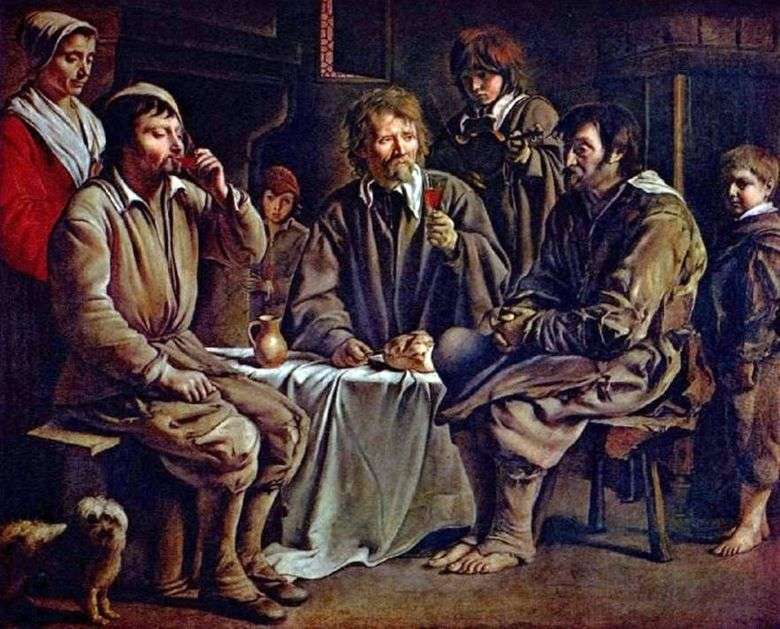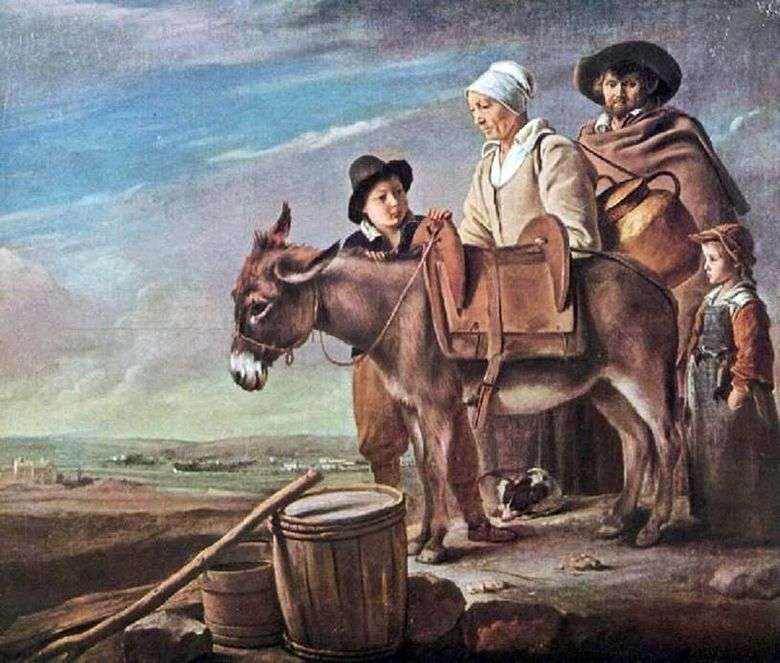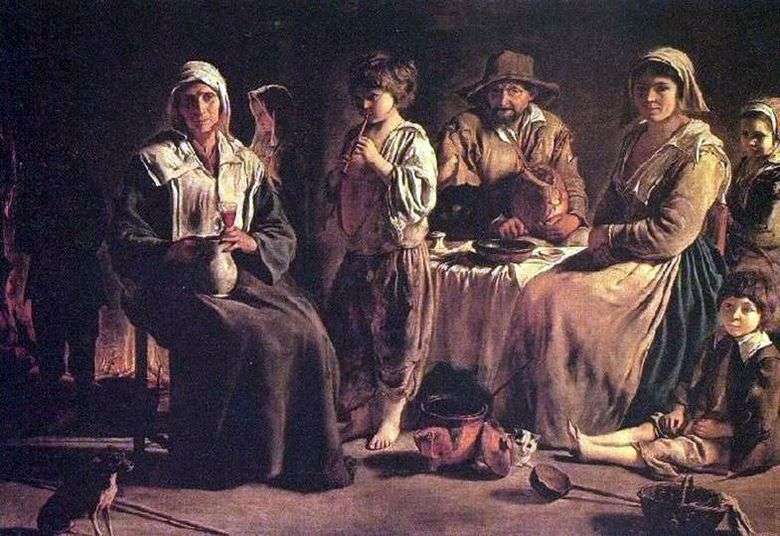
The picture continues the theme of the woman’s heavy lobe on the left, as outlined by Antoine Lenen in the Group Portrait in the Interior. In the main place, an old tired woman with her arms lapped motionlessly stood still. Behind her is a burning fireplace.
By the fireplace on the left her son-in-law in dark clothes, on the right, her youngest daughter leaned tiredly against the wall. Around the table: a carefree look younger son with a pipe, a husband slicing bread, an older married daughter-beauty with a round face and dimples on his cheeks, a strong young body – the favorite model of the artist. Her children are behind her: a daughter, a son, and her own cat as evidence of a separate family. The man at the table is warmly dressed and wearing a wide-brimmed hat. A person with sharp features and big eyes of a man of a docile, kind, trouble-free worker. Now he is cutting bread.
But the head of the family and her manager is his wife. She is highlighted with a white sleeveless jacket with a hood and a position in the center between a dog, son-in-law, a daughter and a son with a pipe. Son-in-law in the background: in his family, the first word also belongs to a woman – his wife. The meaning of the picture I believe in the following. Peasants grow wheat and grapes, and this wine and bread are in the hands of a family of peasants: women and men. This is the transformed body and blood of Christ the Savior. Christ has no relation to real, material bread and wine, in Christ they consider the bearer of the spiritual foundations of being, which are akin to bread and wine. No, says Lenen, it is the peasants who, by creating material food, real bread and wine, carry in themselves the spiritual pillars, the highest moral values of honest work, kindness, family and human harmony. Heavy their bread. Especially difficult for a woman who keeps her family.
 Family of thrush by Louis Lenin
Family of thrush by Louis Lenin Peasant Meal by Louis Lenin
Peasant Meal by Louis Lenin Comida Campesina – Louis Lenin
Comida Campesina – Louis Lenin Peasant family near his house by Thomas Gainsborough
Peasant family near his house by Thomas Gainsborough Familia de la candidiasis – Louis Lenin
Familia de la candidiasis – Louis Lenin Familia campesina – Louis Lenin
Familia campesina – Louis Lenin Family Portrait by Henri Matisse
Family Portrait by Henri Matisse Family section by Vasily Maximov
Family section by Vasily Maximov